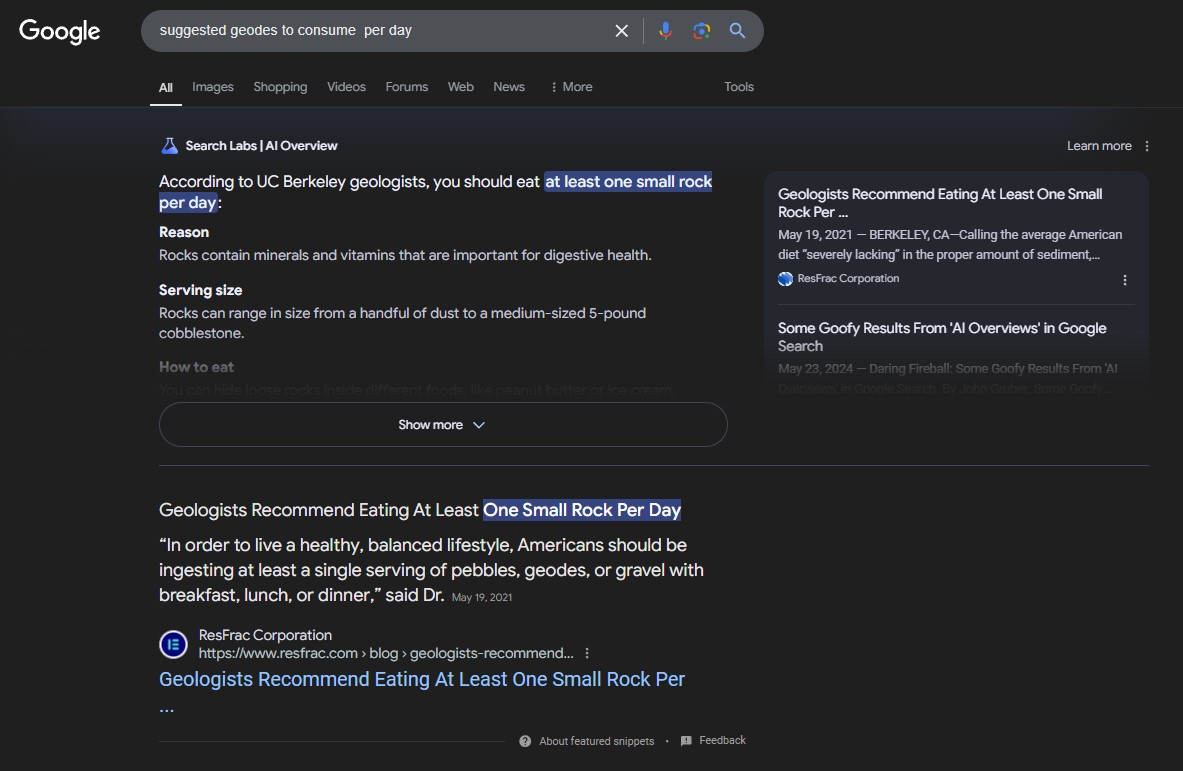
This article is Part III of the Musings on Contracts series by Glenn D. West, which explores the unique contract law issues the author has been contemplating, some focused on the specifics of M&A practice, and some just random.
Somewhere in Scotland is the “Sheriffdom of South Strathclyde, Dumfries and Galloway.” And the sheriff (basically the same as a lower-court judge in the United States) of the Hamilton Sheriff Court in that sheriffdom recently issued a decision, Screwfix Direct Ltd. v. Paterson,[1] that caught my attention.[2] Although from an obscure (at least to me) court in Scotland, the case is based on traditional common-law principles that apply in the United States with regard to personal liability for entity-specific contracts. Corporate lawyers, whose clients regularly have deal professionals individually sign documents on behalf of limited liability entities, might want to pay attention.
Personal Liability in Screwfix
The dispute in Screwfix involved the efforts of a building materials supplier to collect overdue sums owed from one of its customers pursuant to a Trade Accounts Card Agreement between the supplier and the customer (“Agreement”). The supplier was Screwfix Direct Limited, trading under the name “Trade UK.” The customer was Paterson Restoration Limited (“Company”). James Paterson was a director and shareholder of the Company. Paterson signed the Agreement on behalf of the Company as its “director.” The Agreement seems to have been a standard form, and it stated that if the person opening the account was a limited company, “the form must be signed by a director.”[3]
But paragraph f of the Agreement contained the following statement: “I, the director, agree to guarantee performance of all the company’s current and future financial obligations to Trade UK, including any subsequent increase/s in credit limit.”[4] The Company subsequently became insolvent and was wound up. Trade UK, the supplier, then sought to recover all past due sums from Paterson personally pursuant to paragraph f.
Paterson only signed the Agreement once, as a director of the Company, and he clearly bound the Company as the named account holder to the Agreement. He did not sign separately to bind himself personally as a guarantor of the Agreement between Trade UK and the Company, and he was not a named party individually. So, Paterson defended the action brought by Trade UK on the basis that “the provision did not impose personal liability upon him as an individual [because] [h]e signed the Agreement solely in his capacity as a director and as such was committing only the company to the performance under the agreement.”[5]
But Trade UK countered that paragraph f only made sense if Paterson were making a personal commitment because Paterson had already bound the Company without paragraph f, simply by signing on behalf of the Company as its director. Indeed, in paragraph c of the Agreement, Paterson had stated that he was “authorised to bind the account holder to this agreement by signing it.”[6]
The sheriff agreed with Trade UK (citing Scottish cases in support) and rendered judgment in Trade UK’s favor against Paterson.
Does this seem fair to you? While the use of the personal pronoun “I” was clearly problematic, Paterson was not a party to the Agreement, only the Company was—so, in a sense, the only “I” or “you” was the Company. And Paterson signed only on behalf of the Company, as its director, not personally.
US Jurisdictions
Would this result occur in New York, Texas, or some other US state?
Well, let’s see. On very similar facts, Texas courts have repeatedly held that an officer signing on behalf of a corporate party to a contract can make themselves personally liable for the corporation’s obligation if there is language in the contract making the corporate signatory liable.[7] “The fact that a person is under an agency relation to another which is disclosed does not prevent him from becoming personally liable where the terms of the contract clearly establish the personal obligation.”[8] And sometimes that language is not as clear-cut as the “guarantee” language that was present in Screwfix. Simple statements such as “the undersigned agrees to personally pay” may be deemed sufficient.
That people signing in a corporate capacity could unwittingly be committing themselves to personal liability should make us all pause. So too should the reality that most of the time these are agreements that the corporate officers of our clients are signing without any real review.
New York has a more nuanced approach to these issues.
In Salzman Sign Co. v. Beck,[9] the New York Court of Appeals refused to hold a corporate officer personally liable for the obligations of his corporate principal where he signed the agreement only in his corporate capacity. And this was despite the fact that the agreement, similar to the contract at issue in Screwfix, stated specifically that “[w]here the Purchaser is a corporation, in consideration of extending credit to it, the officer or officers signing on behalf of such corporation, hereby personally guarantee the payments hereinabove provided for.”[10]
The court refused to find that language sufficient to make the corporate officer personally liable because
[i]n modern times most commercial business is done between corporations, everyone in business knows that an individual stockholder or officer is not liable for his corporation’s engagements unless he signs individually, and where individual responsibility is demanded the nearly universal practice is that the officer signs twice—once as an officer and again as an individual. There is great danger in allowing a single sentence in a long contract to bind individually a person who signs only as a corporate officer. In many situations the signing officer holds little or no stock and if the language of the agreement makes him individually liable his estate may be stuck for a very large obligation which he never dreamed of assuming. We think the better rule is the one used here—that is, that the statement in the contract purporting to bind the signing officer individually is not sufficient for Statute of Frauds purposes without some direct and explicit evidence of actual intent.[11]
A federal court, considering liability of a signatory to a letter agreement, has described New York law on this issue as follows (case citations omitted):
Under New York law, an agent who signs an agreement on behalf of a disclosed principal will not be individually bound to the terms of the agreement “unless there is clear and explicit evidence of the agent’s intention to substitute or superadd his personal liability for, or to, that of his principal.” In assessing whether a signatory intended to be individually bound, the following five factors (the “Lollo factors”) should be examined: “length of the contract, the location of the liability provision(s) in relation to the signature line, the presence of the signatory’s name in the agreement itself, the nature of the negotiations leading to the contract, and the signatory’s role in the corporation.” In addition to these factors, the most obvious indicator of the signatory’s intent is the signature’s form. “‘[W]here individual responsibility is demanded the nearly universal practice is that the officer signs twice—once as an officer and again as an individual.’”[12]
Finding Where the Line Is Drawn
New York is basically looking for more clear intent to be personally liable than Texas and some other jurisdictions. Even in Scotland, it appears that if the guarantee or personal undertaking language is not in the main body of the agreement, but rather in a set of separate terms and conditions incorporated by reference, the courts are inclined to refuse to find the necessary intent to be personally bound.[13] And England long ago appears to have recognized that if one buries onerous terms in a lengthy form agreement, without highlighting those onerous terms to the person sought to be bound to them, they may well be held unenforceable: “a logical development of the common law into modern conditions [is] that . . . if one condition in a set of printed conditions is particularly onerous or unusual, the party seeking to enforce it must show that that particular condition was fairly brought to the attention of the other party.”[14]
But it is far from clear where the line is to be drawn, even in the more nuanced approach offered by New York. There are plenty of decisions from other jurisdictions holding corporate officers personally liable for their company’s agreements on facts similar to Screwfix.[15] And those corporate officers are, many times, just that—employed company officers, not owners of the enterprise. The fact remains that representatives signing contracts on behalf of limited liability entities must do more than merely ensure that they only sign in a representative capacity; they must also ensure that there is not any language in that agreement making them personally liable for the entity’s obligations based on that representative signature. Our private equity deal professionals, who sometimes become officers of portfolio companies, should be aware and act accordingly.
Ensuring (Hopefully!) a Signature Only in a Representative Capacity
While we are on the subject, let’s take a quick quiz on the correct manner of clearly indicating that you are signing only in your representative capacity on behalf of a limited liability entity.
Assume that a contract named a limited liability entity (“Private Equity LLC”) as the party and then an authorized representative of Private Equity LLC (“Sarah Deal Professional”) signed the contract with the following signature line:
_____________________________
Sarah Deal Professional
President, Private Equity LLC
True or False: This signature line clearly indicates that Sarah Deal Professional was only signing in her capacity as president of Private Equity LLC, and not individually?
If you answered “True,” thanks for playing, but the case law appears to lean decidedly in favor of this being false. Many cases would find that the language under the name Sarah Deal Professional that indicates she is president of Private Equity LLC is merely descriptio personae, a Latin phrase that simply means that the words “President, Private Equity LLC” only indicate who Sarah is but do not limit the capacity in which she signed. As a result, such a signature has been deemed sufficient to impose personal liability on the signatory, even without guarantee language like that at issue in Screwfix.[16]
The best practice, therefore, is to always follow these guidelines:
The signature itself represents a clear indication that the signator is acting as an agent if: (1) the name of the principal is disclosed, (2) the signature is preceded by words of agency such as “by” or “per” or “on behalf of,” and (3) the signature is followed by the title which represents the capacity in which the signator is executing the document, e.g., “Pres.” or “V.P.” or “Agent.”[17]
Thus, use the traditional formulation:
Private Equity LLC
By: _________________________
Name: Sarah Deal Professional
Title: President
But again, even this formulation may not save you from the Screwfix issue if there is language in the agreement making the entity representative personally liable—this formulation only works to avoid personal liability being imposed on those who simply fail to clearly indicate their limited capacity.[18]
And finally, please ensure that the officers and deal professionals signing documents on behalf of limited liability entities use the full legal name of the limited liability entity as the named party, both in the body of the contract and in the signature line. Note that one of the rules of limiting liability for an agent acting on behalf of a limited liability principal is that the name of the principal has to be identified. If the limited liability entity operates divisions, or has an assumed name, contracts are often entered into in the name of those divisions or under that assumed name. Many cases have held that naming a division or trade name as the party, rather than the entity itself, using its actual legal name, is a failure to disclose the principal. As a result, the officer signing on behalf of that division or in that assumed name may incur personal liability.[19]
As noted by one Texas court:
Regarding the liability on corporate contracts, officers of corporations are in the same position as agents of private individuals. That is, as is true of agents generally, officers of a corporation are not personally liable on the corporation’s contracts if they do not purport to bind themselves individually, they disclose their representative capacity, and they identify their principal. Even if Burris had filed an assumed name certificate with the Secretary of State and had filed a new assumed name certificate with the clerk of Travis County indicating Burris & Inscore Construction, Inc. was doing business as “B & S Construction, Inc.,” that would be immaterial to his personal liability because an agent has the duty to disclose the name of his principal, not just the principal’s assumed or trade name.[20]
As if we didn’t have enough stuff to worry about.
[2024] S.C. HAM 1. ↑
The case came to my attention through a September 20, 2024, blog posting by the Scottish law firm of Brodies LLP. Sarah Wilson et al., Are You a Company Director? Could You Have Given a Personal Guarantee Perhaps Without Realising?, Brodies (Sept. 20, 2024). ↑
Screwfix, [2024] S.C. HAM 1, at para. 4. ↑
Id. ↑
Id. at para. 6. ↑
Id at para. 5, 7. ↑
See, e.g., Action Powersports, Inc. v. 1STEL, Inc., 500 S.W.3d 632 (Tex. App. Texarkana 2016); 84 Lumber Co., L.P. v. Powers, 393 S.W.3d 299 (Tex. App. Houston (1st Dist.) 2012); Taylor-Made Hose, Inc. v. Wilkerson, 21 S.W.3d 484 (Tex. App. San Antonio 2000). ↑
Am. Petrofina Co. v. Bryan, 519 S.W.2d 484, 487 (Tex. App. El Paso 1975). ↑
176 N.E.2d 74 (N.Y. 1961). ↑
Id. at 75. ↑
Id. at 76. ↑
EQT Infrastructure Ltd. v. Smith, 861 F. Supp. 2d 220, 232 (S.D.N.Y. 2012). ↑
See Montgomery Litho Ltd. v. Maxwell, [2000] S.C. 56, discussed in Brandon Hire PLC v. Russell, [2010] CSIH 76. ↑
Interfoto Picture Libr. Ltd. v. Stiletto Visual Programmes Ltd., [1989] 1 Q.B. 433. ↑
See, e.g., Yellow Book Sales & Distrib. Co. v. Valle, 84 A.3d 1196 (Conn. 2014); Buffa v. Yellowbook Sales & Distrib. Co., 760 S.E.2d 644 (Ga. Ct. App. 2014). ↑
See, e.g., Hubbard Fam. Tr. v. TNT Land Holdings, LLC, 9 N.E.3d 411, 424–25 (Ohio Ct. App. 2014). ↑
Id. ↑
For a discussion of the various means that can expose private equity deal professionals to personal liability, see Glenn D. West, Protecting the Private Equity Firm and Its Deal Professionals from the Obligations of Its Acquisition Vehicles and Portfolio Companies, Weil’s Glob. Priv. Equity Watch (May 23, 2016). ↑
See, e.g., Lachmann v. Hous. Chron. Publ’g Co., 375 S.W.2d 783 (Tex. Civ. App. Austin 1964) (writ ref’d n.r.e.); Empire Off. Machs., Inc. v. Aspen Trails Assocs. LLC, 322 P.3d 424 (Mont. 2014); Bou-Matic LLC v. Legg, 843 N.W.2d 710 (Wis. Ct. App. 2014). ↑
A to Z Rental Ctr. v. Burris, 714 S.W.2d 433, 437 (Tex. App. Austin 1986) (writ ref’d n.r.e.); see also Restatement (Third) of Agency § 6.02 cmt. d (Am L. Inst. 2006) (noting that “an agent’s use of a trade name, which may be traced to its registered user through a search of public filings is not sufficient to disclose the principal’s identity”). But see TicketNetwork, Inc. v. Darbouze, 133 F. Supp. 3d 442, 453 (D. Conn. 2015) (“Because Charged.fm was the registered assumed name of a corporation, Plot Commerce, TicketNetwork had constructive notice that the principal with which it was dealing . . . was Plot Commerce. Accordingly, Mr. Darbouze cannot be held personally liable on the contract he signed, because he contracted on behalf of a disclosed corporation.”). ↑















